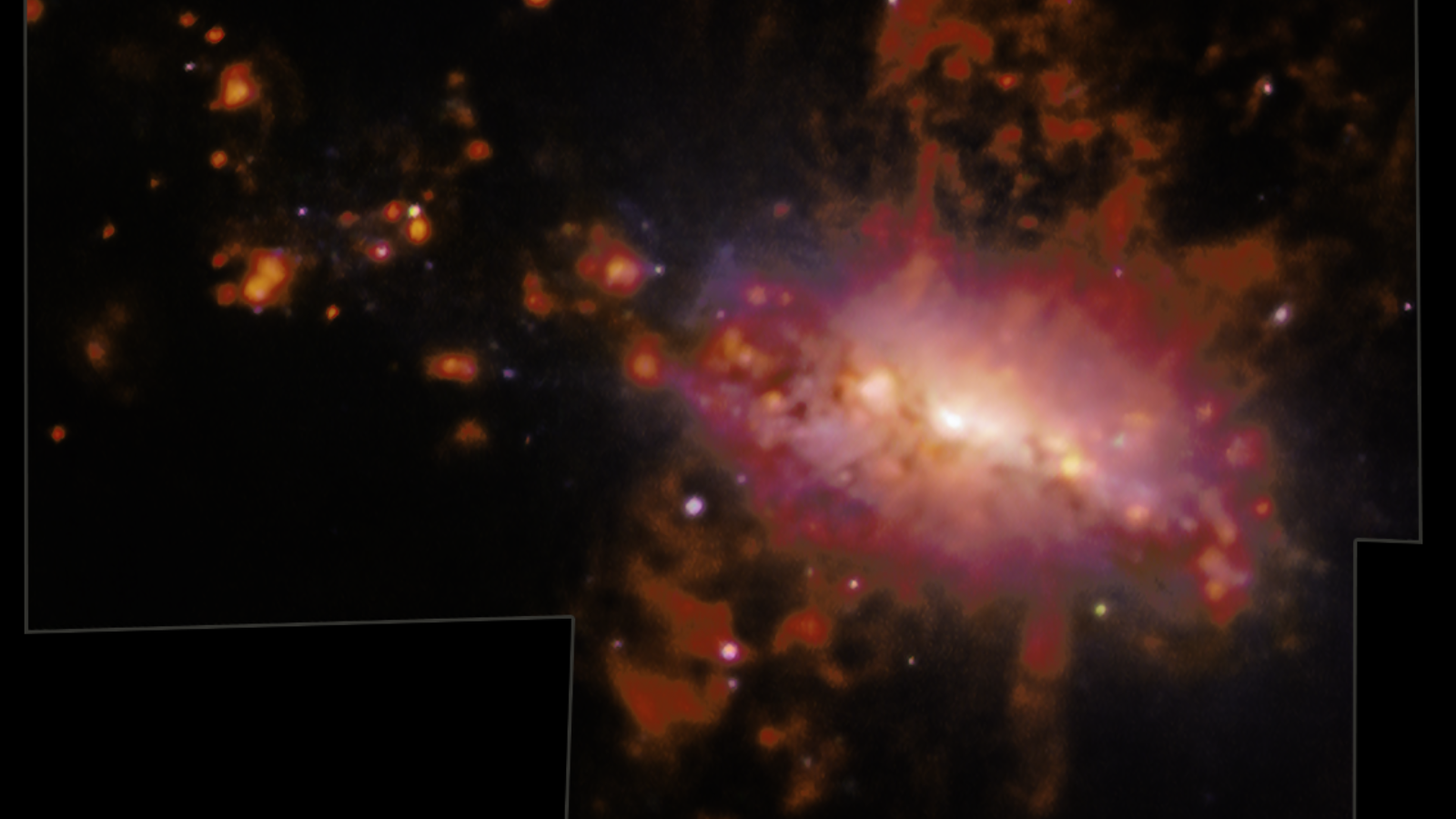50 million sun's worth of material is being deposited into interstellar space by the cosmic fountain.
Astronomers have mapped a 20,000-light-year-long fountain of gas blasting from a nearby galaxy and polluting intergalactic space at 450 times the top speed of a jet fighter.

Massive explosions in a nearby galaxy are releasing enough material into its environs to equal about 50 million suns. This high-resolution mapping of the galactic pollution event provided crucial insights into how the interstellar medium fills with chemical components that eventually form the nuclei of young stars.
The findings came about when the international team studied NGC 4383, a spiral galaxy in the Coma Berenices constellation, using a Very Large Telescope (VLT) instrument called the Multi Unit Spectroscopic Explorer (MUSE).
Located around 62 million light-years from Earth, NGC 4383 is part of the Virgo Cluster and is undergoing a strange and turbulent evolution. This includes the galaxy spitting out an outflow of gas so great it stretches across 20,000 light-years of space. This gas jet, containing enormous amounts of hydrogen and heavier elements is traveling at speeds as great as 671,000 miles per hour. For context, that is around 450 times as fast as the top speed of a Lockheed Martin F-16 jet fighter.
"Very little is known about the physics of outflows and their properties because outflows are very hard to detect," team leader and University of Western Australia researcher Adam Watts said in a statement. "The ejected gas is quite rich in heavy elements, giving us a unique view of the complex process of mixing hydrogen and metals in the outflowing gas."
Watts explained that in the outflow of gas from NGC 4383, he and the team detected oxygen, nitrogen, sulfur and many other chemical elements.






















